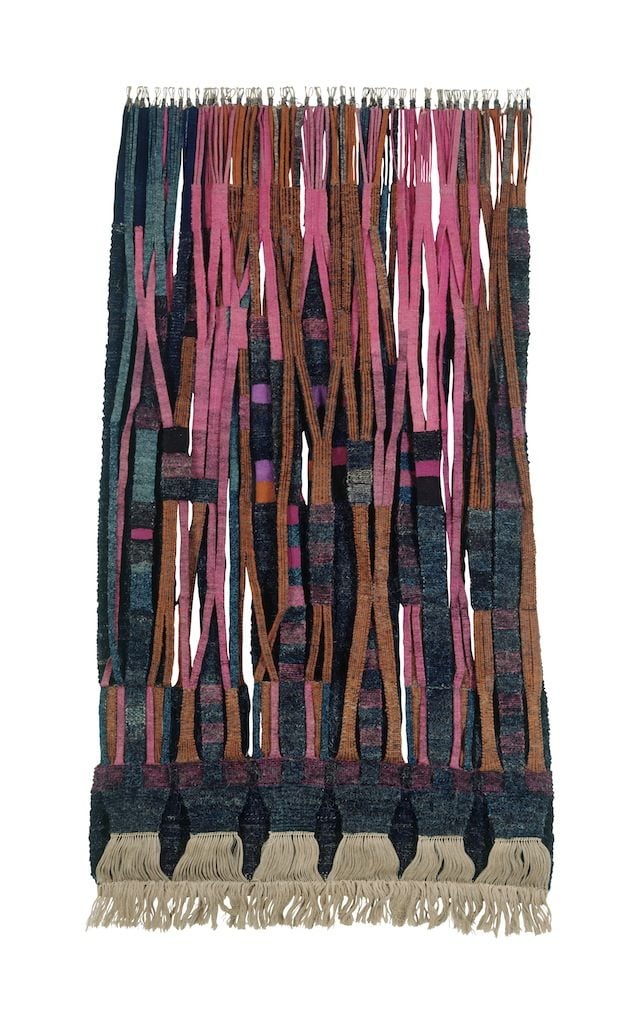Art & Exhibitions
At MAD, Olga de Amaral Weaves Her Way To Greatness
THE DAILY PIC: The Colombian artist evokes a time when textiles still counted.

THE DAILY PIC: The Colombian artist evokes a time when textiles still counted.

Blake Gopnik

THE DAILY PIC (#1328): The Colombian artist Olga de Amaral wove this wonderful textile, known as Hanging #57, in around 1957. It’s now in the show called “Pathmakers: Women in Art, Craft and Design” at the Museum of Arts and Design in New York.
I’m just barely old enough to remember the tail end of this craft tradition, in the 1970s, when such pieces still found room on mainstream collectors’ walls – even though they were (shock, horror) often made by women, who often hailed from peripheral places. I think everyone back then acknowledged that, in purely formalist terms, a weaving could be just as exciting and complex as any painted surface – usually more so. Collapsing the different categories of high and low art had been a central tenet of great modernist movements such as the Bauhaus, which encouraged medium-agnostic abstraction. (Much less so, of course, for the paint-o-philic American modernisms of Clem Greenberg and co.)
But since the 1980s or so, and despite advances in feminist, post-colonial and other “alterior” theories, textiles have fallen further out of the art world’s favor – maybe because of their link to a history of purely formal art making. (Although a weaving’s social contexts and meanings are at least as rich, and unpack-able, as any photo’s.)
Ceramics are everywhere in young artists’ work these days, and not always as a hipster reference to hippiedom. Maybe we’re about to see a resurgence of unironic loomwork, too. (Collection of the Museum of Arts and Design, gift of the Dreyfus Foundation through the American Craft Council, 1989; photo by Eva Heyd)
For a full survey of past Daily Pics visit blakegopnik.com/archive